Hong Kong, long plagued by sky-high property prices, was judged the world’s least affordable housing market for the 13th consecutive year this March. Yet a Yau Tong site which could accommodate thousands of homes has been lying idle for almost three decades.

Big developers and the government have repeatedly failed to agree on a land premium which landowners must pay before construction. With the developers currently hit by a 14-year high in interest rates and a property market slump, some experts say the site should be partially rezoned for public, rather than private, housing.
One developer has managed to sell all of its units on a small portion of the Yau Tong waterfront, but only after price cuts to levels last seen seven years ago.
Flats at Coast Line II were sold in August at an average of 15 per cent below the market rate -prices equivalent to the cost of a government-subsidised apartment. The cheapest flat was a studio apartment measuring 210 square feet, offered for HK$2.9 million, or HK$13,810 per sq ft – an 18 per cent reduction on the market rate.
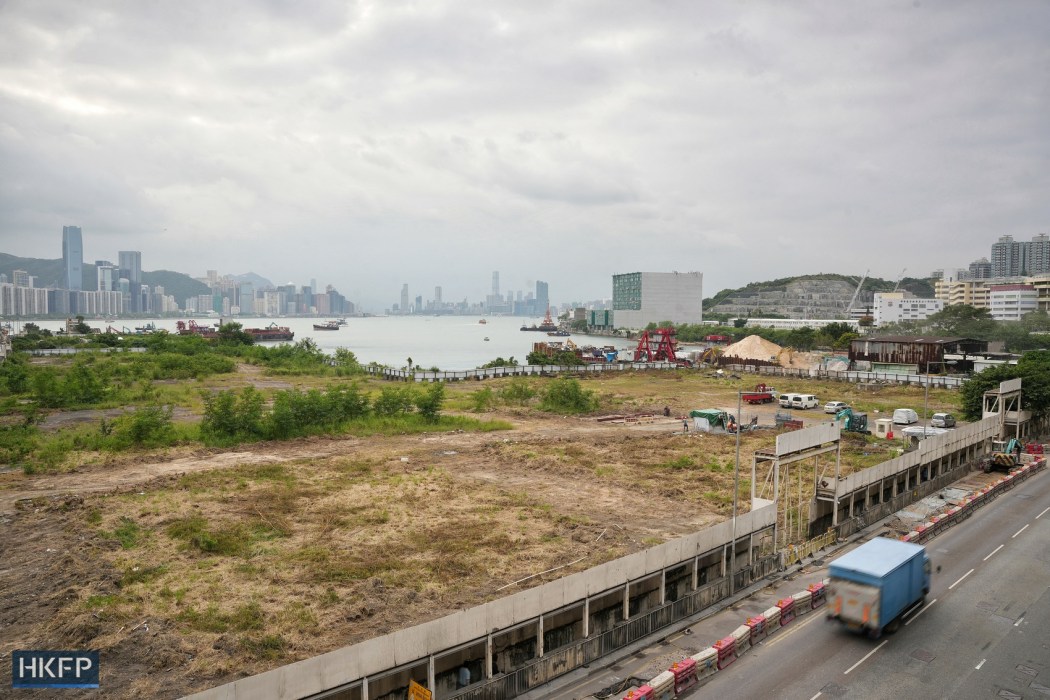
The private homes, which have yet to be completed, are among the first of a proposed 12,000 flats scheduled to be built under a large-scale development project just a short walk downhill from Yau Tong’s mainly working-class neighbourhood.
Most of the seaview site spanning just under 14 hectares – made up of Yau Tong Bay and an adjacent industrial area – has been left idle for close to three decades. With the city’s housing market in a rut, it seems the wait will last even longer.
30 years idle
The Coast Line properties have been developed by CK Asset, the flagship developer of Hong Kong’s richest man – Li Ka-shing – and are part of a proposed large-scale private development project in the Yau Tong Industrial Area. It was once known as the “the ulcer of Victoria Harbour” for its heavy pollution before the government eventually rezoned it for residential and comprehensive development in 1998.
The adjacent Yau Tong Bay was originally part of the industrial estate and populated with shipyards and sawmills in the 1950s. The U-shaped plot, created by reclamation, was rezoned for comprehensive development in 1993 when the colonial government was still in power.
To Chan Kim-ching of development policy think-tank Liber Research Community, the Yau Tong “privatopia” illustrates the problem with private land development in Hong Kong.
For years, real estate oligarchs have been accused of hoarding existing land resources in the city. Developers are currently sitting on more than 1,000 hectares of agricultural land alone – not to mention urban land resources such as the Yau Tong plot. No taxes are imposed on land hoarding in Hong Kong.

Echoing Beijing’s characterisation of Hong Kong’s housing crisis as a “deep-rooted problem,” the Director of the Hong Kong and Macao Affairs Office (HKMAO) Xia Baolong has said he hoped the city would eradicate its infamous subdivided flats and cage homes by 2049.
“This reflects another side of Hong Kong’s land problem,” Chan said. “People always say there’s no land in Hong Kong, but the Yau Tong plot has been left idle for 20, 30 years.”
Land premiums
By the time construction for the Coast Line flats finishes in late 2025, less than a tenth of the 12,000 flats will be complete. Chan said private developers’ unwillingness to pay hefty land premiums was to blame.
In an interview with HKFP, the researcher said developers had repeatedly rejected land premium offers set by the Lands Department.
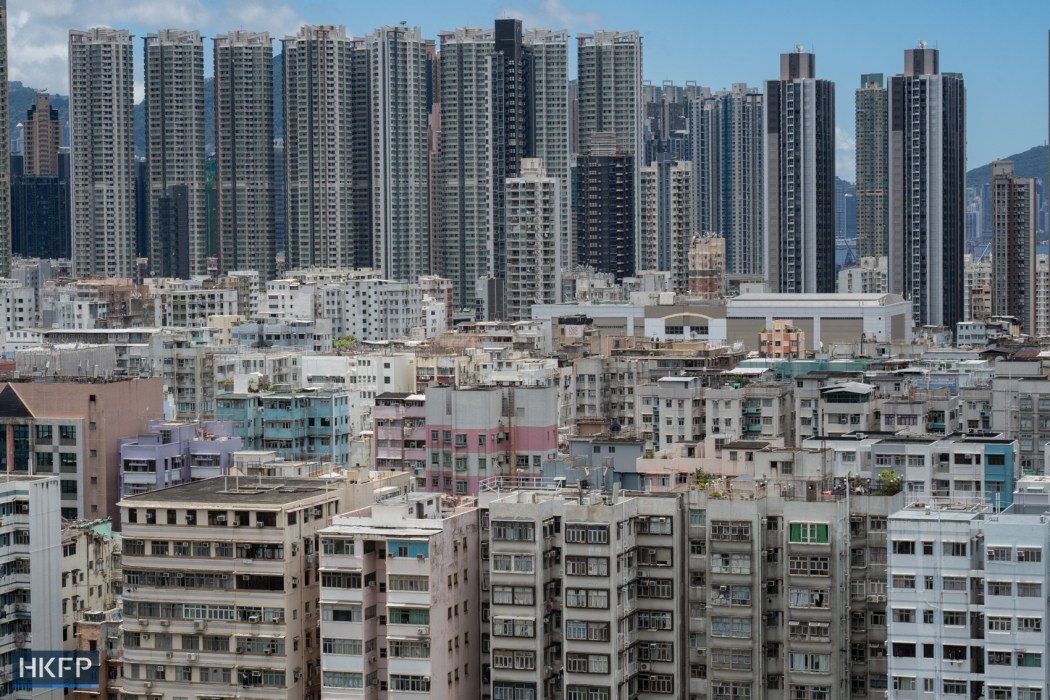
Henderson Land Development’s executive director Augustine Wong told reporters last month that the consortium in charge of the Yau Tong Bay project – consisting of Henderson, Sun Hung Kai Properties, New World Development, Hang Lung Properties, China State Construction, and Wheelock Properties – had refused to accept the latest deal.
The HK$24.5 billion premium was calculated at an average of HK$6,000 per square foot for the project’s 4.01 million square feet of buildable gross floor area.
Chan said the developers were appealing to the government to reduce the figure because the property market was falling faster than the premium. The consortium had previously turned down another offer in March 2021, also citing exorbitant costs.

The head of the Real Estate Developers Association (REDA) Stewart Leung has said in an interview with the Hong Kong Economic Journal that “there has never been a redevelopment so repetitive” and that the developers in the consortium each had their own interests to consider.
Norey Tsang, an assistant associate director at Midland Realty, said developers did not have hopes of making a big profit at Yau Tong and wanted merely to reduce the premium by around 20-30 per cent, to a level commensurate with the prices of the finished flats.
New World Development’s net gearing ratio – a metric of how much of a developer’s operations are funded by debt – stands at 46.9 per cent, while Henderson’s was 24 per cent, according to their latest interim financial reports. And with interest rates at a 14-year high, developers are wary, Tsang told HKFP in a phone interview.
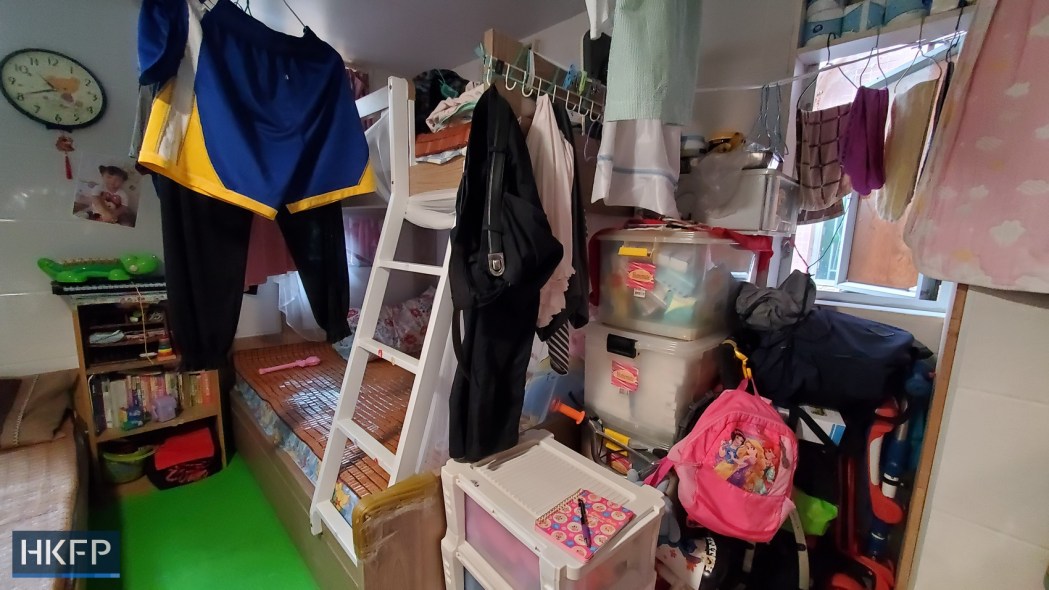
“There’s no pressing need for them to take that [land premium] price,” he said. “They can afford to slow down the pace of development.”
Louis Loong, lawmaker for the real estate sector who is also secretary general of the developers association, declined to speak with HKFP, with his assistant saying he had no comment on matters regarding the Yau Tong development.
Gov’t intervention and market forces
The decades-long wait should have been enough to dispel the commonly-held belief that private developers are more efficient than the government, said Chan of Liber Research, arguing that the government’s “blind faith” in market forces had significant implications for future private development initiatives.
That would include development projects on proposed artificial islands to be created east of Lantau and envisaged as the city’s third business district, after Central on Hong Kong island and Kai Tak in Kowloon. Kai Tak was hit the hardest when Midland Realty recorded a cumulative 20,513 unsold flats in August.
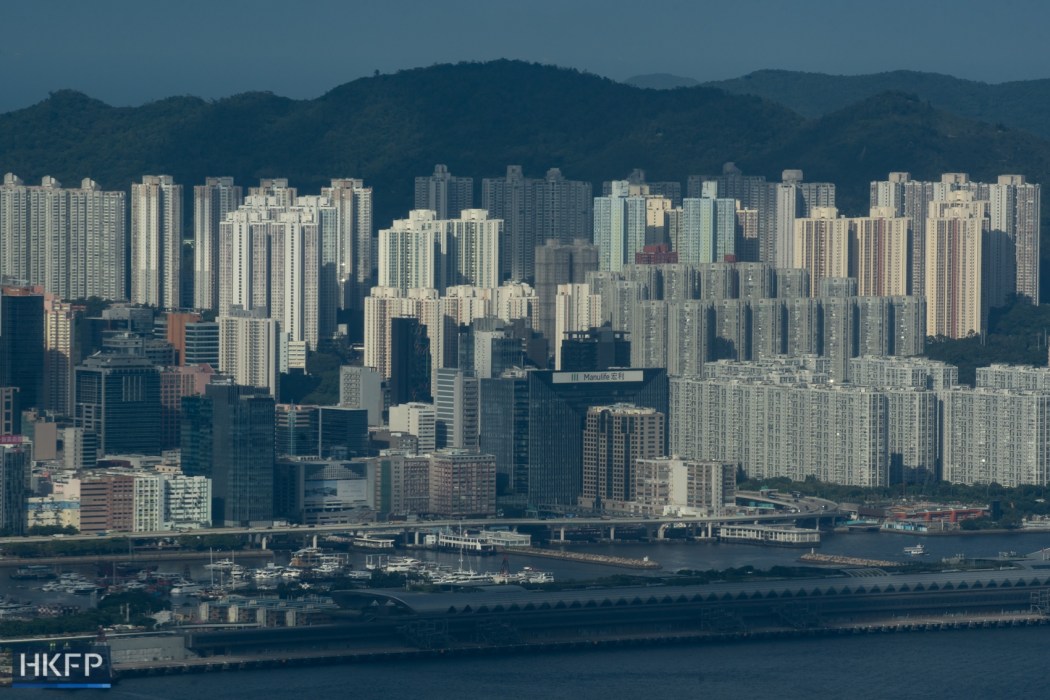
That figure has been on the rise for months, with Centaline Property reporting 19,085 unsold flats as of the second quarter of 2023.
Chan said the idle Yau Tong plot could have been put to better use as a site for transitional housing for residents waiting for a public housing flat, or for flats under the Home Ownership Scheme (HOS) – the government’s subsidised-sale housing programme.
Flats under the scheme are considered public housing, as are subsidised flats built by private developers introduced under a new pilot scheme that the government says could help kickstart development on existing land.
In 2018, the government set a 10-year target to bring the proportion of public housing up to 70 per cent, with the remaining 30 per cent for private housing. That has become a holdover policy goal for Chief Executive John Lee’s administration.
Chan said zoning half of Yau Tong Bay as HOS flats would create a “sense of urgency” and speed up private development. “They [developers] will realise that they might lose their hold on the development project if the delays persist,” Chan said. “Why can’t the government take the lead and do what this city needs the most, which is to build public housing or subsidised flats?”
But rezoning the land at the Yau Tong waterfront would “change the rules of the game,” said Cody Chow, another researcher at Liber. “It would only be a last resort for the government.” A land hoarding tax, he added, would similarly be out of the question.
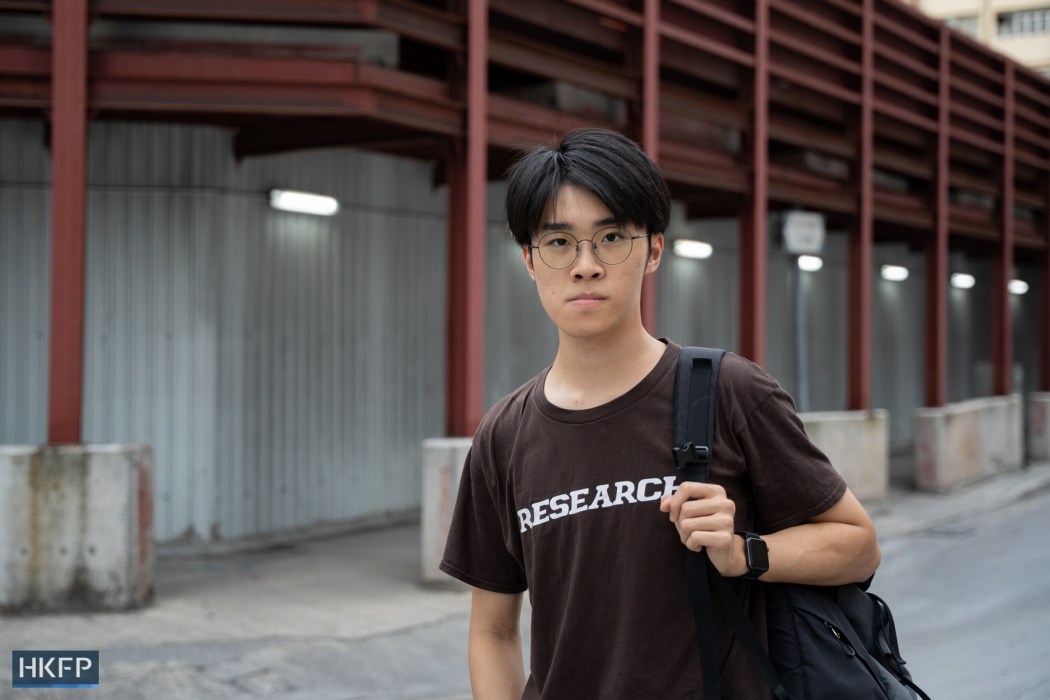
Ng Mee-kam, director of Urban Studies at the Chinese University of Hong Kong, said the government could take a more proactive role in better utilising land resources, if it chose to do so. “They can rezone the land. They can ask [the Urban Renewal Authority] to work on it, and they can initiate a public-private partnership,” she told HKFP.
Yau Tong West district councillor Lui Tung-hai, meanwhile, said the Yau Tong Bay project had been stuck in the pipeline for too long. “Drawing out the development doesn’t do any favours for residents,” he said.
Lui said residents and the council were both largely supportive of the development plan, but also hoped that there would be height and density limitations in place to ensure that the sea view was still visible to other residents.
While he supported the government’s push for more public housing, Lui had no hopes for government flats on the the harbourfront site. “Most of Kwun Tong district is public housing anyway,” he said.

Other than proposed major developments off Lantau and in the New Territories, site rezoning was listed as one of the methods for increasing housing supply in Lee’s maiden policy address last year. He also cited New Development Areas, brownfield and factory estate development, and major infrastructure projects.
In a reply to HKFP, the Development Bureau said zoning the Yau Tong sites for private development would “maximise development potential” to meet development needs.
“While the Government may not have control over the pace of these market-led redevelopment projects and the original use at these sites continues to exist before redevelopment, we consider this as a necessary process of urban renewal to replace old with new,” a spokesperson for the bureau said.
Homes or investments?
Midland’s Tsang, however, said building government flats at Yau Tong Bay would only cause the investment value of the area to fall, and negatively impact developers’ enthusiasm. He compared Liber’s suggestion to the situation at Kai Tak, where home prices plunged after private residents voiced concerns about a short-term public housing initiative that would block their sea views.
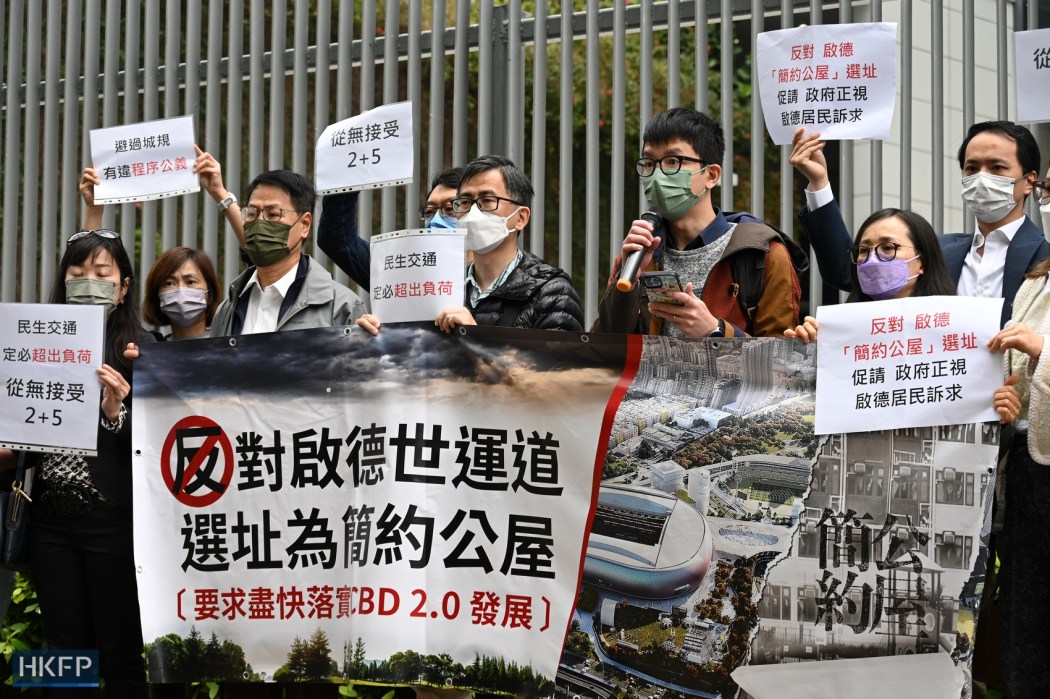
Even the current zoning plan could jeopardise property values. The Planning Department acknowledges that “interface problems” may arise while Yau Tong Bay is transformed into a residential area.
Chow said the area’s “Residential (Group E)” zoning bans “new industrial developments” but allows existing industrial buildings to remain until they are replaced by high-rise apartment complexes. This would make for “incompatible” land use over the course of Yau Tong Bay’s gradual transformation into a private housing enclave.
Right next to the Coast Line II complex, just several feet away from the lower floors, are two concrete batching plants that remain operational even though operator China Concrete Company faces 26 prosecutions from the Environmental Protection Department (EPD).
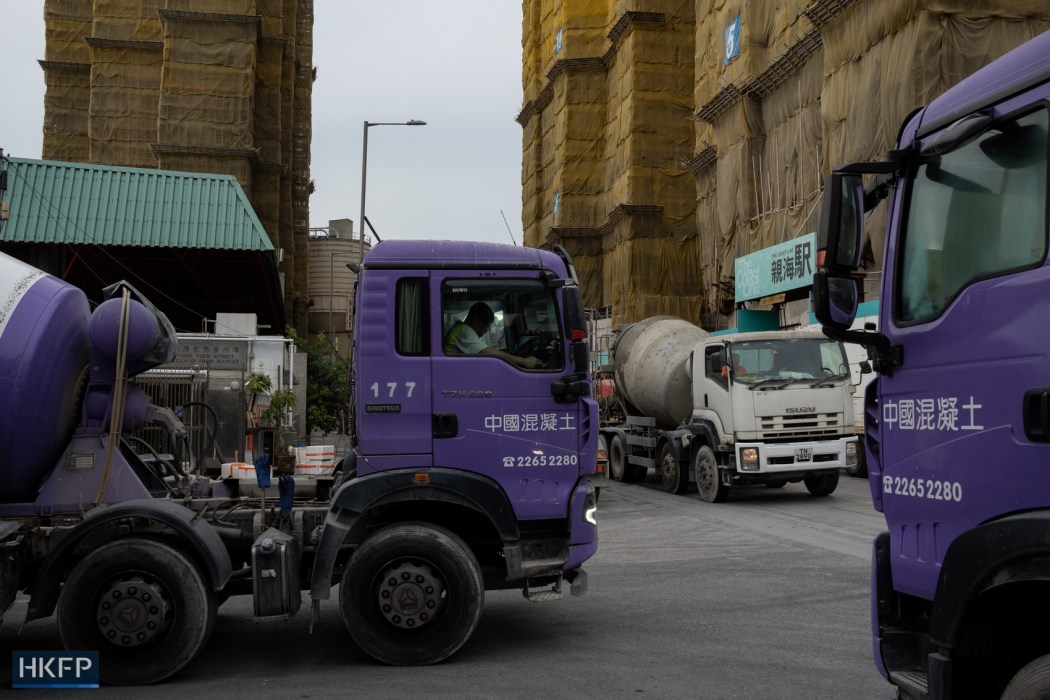
The operator has been refused licence renewals for both plants on several occasions since April 2021 for failing to limit air pollution, and the High Court this January rejected a legal bid to challenge the government’s decision. Just last month, the city’s Ombudsman found that the EPD had properly fulfilled its duties “from an administrative perspective.”
Ailing property market
Suggestions that stamp duty may be cut, a decade after it was increased to curb a property market bubble at the time, have fuelled speculation that home sales and prices could rebound.
As of October 11, after finance minister Paul Chan hinted last month that the measures would be scaled back, Henderson shares had surged 5.8 per cent to HK$21, Sun Hung Kai had risen 7.4 per cent to HK$85.25, and New World 3.9 per cent to HK$15.06. Yet it could be years before developers feel the tangible effects of relaxing what were once dubbed the “spicy measures.”
Meanwhile, disappointing land sales indicate that developers are still cautious. Only two of the 18 plots earmarked for sale in the current fiscal year have been sold so far, raising HK$10 billion in premiums.
Originally, the government hoped to raise HK$85 billion via the programme by the end of the fiscal year in March 2024, which would equate to some 13 per cent of its total expected revenue. It also hoped to rake in the same amount from stamp duties.
For the government, which faces an overall deficit potentially larger than the HK$54.4 billion it had originally forecast earlier this year, land sales are a significant source of revenue for funding infrastructure projects.
Support HKFP | Policies & Ethics | Error/typo? | Contact Us | Newsletter | Transparency & Annual Report | Apps

Almost 1,000 HKFP Patrons made this article possible. Each contributes an average of HK$200/month to support our award-winning original reporting, keeping the city’s only independent English-language outlet free-to-access for all. Three reasons to join us:
- Transparent & efficient: As a non-profit, we are externally audited each year, publishing our income/outgoings annually, as the city’s most transparent news outlet.
- Accurate & accountable: Our reporting is governed by a strict Ethics Code. We are 100% independent, and not answerable to any tycoon, mainland owners or shareholders. Check out our latest Annual Report, and help support press freedom.
- It’s fast, secure & easy: We accept most payment methods – cancel anytime, and receive a free tote bag and pen if you contribute HK$150/month or more.
Help safeguard press freedom & keep HKFP free for all readers by supporting our team

Support HKFP | Policies & Ethics | Error/typo? | Contact Us | Newsletter | Transparency & Annual Report | Apps

Almost 1,000 HKFP Patrons made this article possible. Each contributes an average of HK$200/month to support our award-winning original reporting, keeping the city’s only independent English-language outlet free-to-access for all. Three reasons to join us:
- Transparent & efficient: As a non-profit, we are externally audited each year, publishing our income/outgoings annually, as the city’s most transparent news outlet.
- Accurate & accountable: Our reporting is governed by a strict Ethics Code. We are 100% independent, and not answerable to any tycoon, mainland owners or shareholders. Check out our latest Annual Report, and help support press freedom.
- It’s fast, secure & easy: We accept most payment methods – cancel anytime, and receive a free tote bag and pen if you contribute HK$150/month or more.
Help safeguard press freedom & keep HKFP free for all readers by supporting our team

The post Behind slashed prices at a Hong Kong property, an idle seafront site hoarded by developers for 20 years appeared first on Hong Kong News Hub.
from
https://hongkongnewshk.com/behind-slashed-prices-at-a-hong-kong-property-an-idle-seafront-site-hoarded-by-developers-for-20-years/



No comments:
Post a Comment